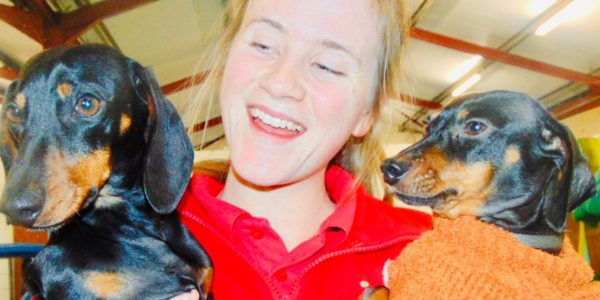What’s all the fuss about Grass Seeds?
10/07/2020 - Suffolk Canine Creche

Candace Rose, owner of dog grooming salon Fluff The Ruff and Suffolk Canine Creche has identified many issues associated with grass seeds already this season – referring two poorly pooches for veterinary attention. Here she explains what to look out for and what actions to take.
In two days we have seen over ten dogs with grass seed cases, the two refereed to vets have both had to be operated on to abstract the seeds.
Its that time of year when grass seeds are prevalent. The common area for a grass seed to enter your dogs body is the foot, particularly in our furry breeds with very hairy feet, though of course it can happen to all dogs.
The grass seed can easily penetrate the skin, and enter the body, migrating up the leg or deeper into the foot. Commonly they get between the toes, and the movement of walking or running triggers this to go into the body. Once they have burrowed into the highly sensitive tissues of the foot it results in extreme pain, discomfort, infection and sudden onset (acute) lameness.
When examined closely, dry Foxtail grass seeds resemble tiny arrowheads. This enables them to attach themselves easily to an animal’s fur and burrow into the skin of that victim’s body part. Checking your dogs body thoroughly after each walk and restricting any time spent in grassy meadows or woodlands will help.
Another high risk on the dog is the ear, although other places on your dog’s body can be at risk too. The ear canal’s uni-directional nature and shape allows the grass seed to work its way from the fur around the ears down along the ear canal, and come to rest right up against the delicate ear drum.
What to look out for
Your dog may vigorously lick its paws. Show an immediate level of lameness – though not in all cases. They may also look uncomfortable, lethargic and in a lot of pain. Though some hide pain very well, or are simply more hardy than others! Head shaking is very common with a grass seed in the ear.
All cases require immediate veterinary attention as they may be able to extract without having to sedate if a full migration of the seed has not occurred. Please don’t rub the area, it will make migration inevitable.
At Suffolk Canine Creche last summer we had to inform an owner of our suspicions and findings at a rate of least one per week, this year seems far worse. Our staff tend to notice this as we are spending all day with your dog, not focused on working form home or doing anything else, your dog is our only focus. The stylists of course are getting up close and personal with your dog’s feet and body, and once they trim the hairy feet, it becomes very evident, some are already infected.
Finally, please help to raise awareness and tell others, especially first-time dog owners, of the symptoms to look out for, as a tiny little grass seed can often be the cause of one of the most painful, expensive, and common conditions our beloved dogs can suffer from.
Check out this super video from Doctor Dave, who demonstrates just how easily the grass seed can enter the body…well worth a watch!
All articles on this news site are submitted by registered contributors of SuffolkWire. Find out how to subscribe and submit your stories here »



